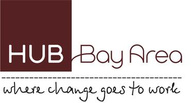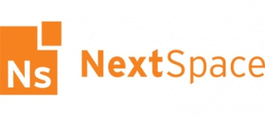
Credit http://www.flickr.com/photos/prayitnophotography/
Pitch your Startup, App or Hardware or post a Startup Event or Startup Job 
Inna Efimchik is a Partner at White Summers Caffee & James LLP a Silicon Valley & San Francisco based Law Firm and specializes in assisting emerging technology companies in Silicon Valley and entrepreneurs seeking to establish themselves in the Bay Area. Inna can help with incorporation, financing, and licensing services as well as general corporate counseling.
If you are traveling to the Silicon Valley to raise capital for your startup from abroad, you can save yourself a lot of time and make the trip more efficient by preparing thoroughly and doing your homework before the trip.
Inna offers a free 1/2 hour consultation to foreign entrepreneurs coming to the Valley, you can contact her via the form at the bottom of the page.
Here are some things that should not be overlooked:
The Right Time to Fundraise in the Silicon Valley
Silicon Valley is a fantastic place to visit almost any time of year. We have great weather here year-round, many tourist attractions within a stone’s throw of one another, and fantastic sights for the nature enthusiast.

Ready for U.S. Fundraising
The best time for a foreign startup to come to the Silicon Valley to raise venture capital is when it can make the following statements (truthfully):
- We raised a small seed round of capital with a local venture capital firm and angels
- We have publicly launched our product in our country
- Our product has gained significant traction in our domestic market
- We are ready to launch our product on the US market
- We are opening an office in the US that will be handling US operations and marketing
- Our management team has already relocated to the US (or is relocating to the US within 3-6 months)
- Our CEO reads, writes and speaks fluent English and is able to present our company to US investors, strategic partners, and clients in a clear, competent and confident manner.
Almost there
If a startup meets some (maybe 4-5) but not all of the criteria on the left, it does not mean that the founders should not come to the Silicon Valley to fundraise. But it does increase the likelihood that this is going to be the first of several trips. A startup at that stage may still be able to successfully raise capital from Silicon Valley VCs, but it may easily take 6 to 12 months or longer and multiple trips to get to a term sheet.
Raising money in the Silicon Valley is difficult, even for companies that fit all of the criteria above. So a company that does not, has a higher hurdle to overcome.
Still, I believe the preliminary trip, if approached correctly, with due preparation, forethought, and the right expectations, can be instrumental in laying the groundwork for a future financing by giving the founder an opportunity to establish contacts, by growing the founder’s professional network in the Silicon Valley, and by clarifying areas of improvement in the startup’s fundraising position.
More work to do at home
A startup that either has not launched a product, or has launched a product but it has not seen significant adoption domestically, and that has not received support from its local investors, has more work to do at home before venturing out to fundraise internationally. That is not to say that such startups should not attend international conferences or take business development trips, whether to the Silicon Valley or elsewhere. I just think it will be more productive to realize that it may be too early to be fundraising abroad in earnest, so the trip, if taken, should have other purposes and expectations attached to it in the founders’ minds.
The Chief Executive Officer
To state the obvious, the right CEO makes the difference between a startup that gets venture capital funding and one that does not. As we said above, to be successful at raising capital in the United States, the foreign CEO has to have fluent written and conversational English, though he or she may speak with an accent and many do. The CEO must also have the personal and business skills that make him or her a good person to represent the startup in investor meetings.
But what if the CEO does not have good English? Unfortunately, neither engaging translators to assist in pitch meetings, nor hiring U.S. promoters or U.S. investor relations specialists to help with fundraising, actually works.
Ultimately, the investors have to believe that the core team has what it takes to succeed, and if the investors have a language barrier with the CEO, they will simply not have sufficient basis to form that belief. The solution is one that is true for all companies, local or foreign – if the CEO is not the man (or woman) for the job, find a CEO who is!
In startups, one of the founders is the CEO by necessity. Sometimes it is the right fit. And at other times it is not. Sometimes it is the right fit for the country, where the startup is based, but not for the U.S. Any company that hopes to be successful must recognize wherein lie its team’s weaknesses and fill them with new hires. If the current CEO will not be able to fundraise successfully in the U.S., the startup should entertain the idea of recruiting a U.S.-based CEO or another CEO in their country with solid “western” experience.
In that situation, the current CEO can take another title, whether it is President, Chief Technology Officer, Chief Financial Officer, or whatever else best fits his or her strengths. Unfortunately, relinquishing the helm can be a major pain point for founders. I am sure some of my readers are wincing as they read this advice.
The bottom line
There may be a lot of investment capital aggregated in the Silicon Valley, but there are oh so many contenders from all over the world all vying for it!
Preparing for the Trip
Research
Before your trip, sign up for startup networks, groups and mailing lists, to receive announcements about upcoming events. You should know which venture capital firms and super-angels are investing in your space. You should research and consider which strategic investors you should target, if any. Based on your research, prepare a list of 10 to 20 people that you’d like to meet while you are here. This list is aspirational, so if you do not get the opportunity to meet all of them, you have not failed.
 Create a LinkedIn profile, if you don’t already have one. Connect to me on linked in here. If you have one, check to see if it’s time to review and update it. This is your business resume. Most professionals rely on it!
Create a LinkedIn profile, if you don’t already have one. Connect to me on linked in here. If you have one, check to see if it’s time to review and update it. This is your business resume. Most professionals rely on it!
Don’t be lazy – take the time to write-up prior projects and experience, your education, and anything else relevant to what you are doing and to who you are now. This is your chance to tell people what you want them to know about you!
Note that LinkedIn is also a great place to do your own “diligence” about the people you’ll meet while networking, through introductions, or otherwise.
Video Presentation
If you have the resources, create a short video teaser and post it on YouTube or Vimeo for easy sharing with new contacts. A few excellent examples are below. Notice how effective it is if the teaser can demo your product or service. A picture is worth a thousand words. And a video is worth at least a thousand pictures, charts and graphs.
http://www.youtube.com/watch?v=RHnUSKIULbs
http://www.youtube.com/watch?v=0sUBjIzYv6k
Videos work well to get you a foot in the door (not seal the deal for you). Before an investor takes the time to read your executive summary, in fact, before he even makes the decision about whether it’s worth his time to do so, it is helpful if you can get him excited (or at least curious) about your product or service.
The way to do it is by offering information in an easy and fun format – video – that appeals to the viewer’s emotions, not just his intellect.Executive Summary / Presentation. VCs don’t read business plans.
They just don’t have enough hours in the day to screen companies based on their business plans, and, frankly, with business at an early stage, a business plan reads more like astrological predictions than fact.
Executive Summary & Pitch Deck
Still, if you are talking to an investor at a networking event, or have been introduced to an investor by email, he will want to see something in writing about your company. You will be expected to send an executive summary (a one-pager that introduces the investor to your company and piques his interest) or, more frequently these days, an investor slide deck (8-10 PowerPoint slides that serve the same purpose but are easier on the eyes).
Instead of trying to work with your team back home when you are already here, faced with a time difference and time pressure, prepare this before you come. You may have to adjust it based on the feedback you receive from investors, but if you have a solid draft, it will make your life easier.
A really well-made executive summary or deck can set apart your startup from the rest and give you a fighting chance at a more involved look from the investor.
You can work with designers and advisors to help solidify your message in your materials. But do not hire someone to write them for you. You have to own your materials, and by that I don’t mean the legal sense of ownership, but in the sense that you stand behind each word in that document and, if prompted, can expand in verbal or written format on any of the points made in it!
Ed: I like Pollenizers Pitch Deck http://pollenizer.com/universal-startup-pitch-deck & http://bestpitchdecks.com/
U.S. Phone Number
With your Google account, you can get a free Google Voice number and set up call-forwarding from that number to your temporary U.S. number.Google Voice also offers voicemail functionality. Make it easy on your callers – record a greeting with your name and the name of your company, so that they know they reached the right number.
Credit Cards
The most common and convenient payment method for most things that you’ll need to buy on your trip will be a credit card. Every online purchase will require it and some merchants (like car rental places) will take your credit card number as a security deposit, even if you pay cash.When getting ready for your trip, make sure there is money in the account tied to the card that you are taking with you. To really play it safe, take several credit cards tied to accounts at different banks. It is best to call ahead, and let your bank know that you will be in the United States. Sometimes banks will suspect identity theft and block your card, if there is unexpected activity on your card in a foreign jurisdiction. Nothing quite makes travel so uncomfortable, as having your credit cards lock up, when you are relying on them as a primary payment method!Driver’s License. While you are visiting California, you are permitted to drive with your valid foreign license. Make sure to take it with you, as you are packing for your trip, and that it does not expire during your trip (rendering it no longer valid)
Basic Principles of Effective Networking in Silicon Valley
If you have meetings with investors and interesting contacts already lined up for your trip, then you may want to skip the networking events altogether. They are a lot of work and will really wear you down. But if you are still building up your network and need to fill out your trip calendar, networking events are a great way to get exposure to a lot of people fast.
Because networking is hard work, if you are going to do it, you might as well make the most of it. My suggestions are based solely on my own personal experience and reflect either what has worked for me or my observations of the behavior of others. There may be other effective networking tactics, so if you are feeling anxious about this, read a few more articles (or books) for a deeper dive.
Set the Right Goals
Make sure you set the right goals and expectations for yourself when you go out to network. Chances are that you will not meet and win over an investor at a networking event (unless the event is a pitch competition than you win, and frequently not even then).
What you should really be hoping to do is to ingratiate yourself with three to five well-connected individuals, who will make introductions for you to people in their network. Note that those people that you get introduced to may not be your investors either.
The goal of networking is to grow your network because you never know where your investors, customers, or even future employees may come from. Approach networking with an open mind, and good things will come!
Business Cards
Business cards are cheap, so stock up and bring enough. Sure, if you run out, you can add the person you are speaking with on LinkedIn during the conversation or take his card and write your name on the back of it. But coming unprepared does not characterize you well, and if there is a chance someone will keep your pretty business card around and will remember about you some time in the future when it could be advantageous to you, you can be sure they’ll toss your info scribbled on the back of their card. LinkedIn is good, but unless you have a stellar memory for names, it can be hard to find contacts. So, personally, I prefer cards. But don’t mistake handing out cards for networking. If you hand out your card like it’s on fire, but don’t cement it with at least 3-5 minutes of solid conversation with the folks you gave the card to, you may as well have thrown it in the trash

- Cool Business Card – credit http://cardrabbit.com/cool-business-card-alex-faure/
Your business card should be in English and should contain
- Your company name (and if you have not registered the company, the name that you think you will use)
- Your name and title
- Your corporate domain & email address
- The address of your physical office (if any), and
- Your U.S. phone number.
Note that you don’t have to spell your name on the card the way it is spelled in your passport. Feel free to spell it in a way that will make it easy for English speakers to read. This will save you time and annoyance, unless, of course, you like correcting people and having off-topic conversations about foreign names, the English language, pronunciation, etc.
Dress to Impress
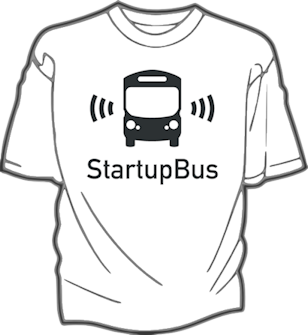
- Startup Bus Tshirt – credit http://www.projeggt.com/project/startupbus/summary/
When you go to events, you want to be memorable, stand out in the crowd. That way, when someone you spoke to for a few minutes wants to introduce you to someone else at the event, he can find you again in the crowd. As with anything, you have to be careful not to overdo this, because if you are too outlandish in your wardrobe, you might be memorable, but it won’t score you any points. The trick is to stand out in a positive way.
At the very least, if you have a T-shirt with your company’s logo, wear that. It may not be very original, but it will be a good conversation starter, and people with a visual memory are more likely to remember the name of your company if it’s written across your chest.
Forget your Comfort Zone
Networking is not comfortable. It would be easy if we could show up at an event, and relevant contacts would line up to meet with us in an orderly fashion. In fact, that’s not what happens at all. You are lucky if you are approached by another networker looking to strike up conversation. More frequently, you find yourself in a room surrounded by small groups deeply immersed in their own private conversations. They look intimidating.
But if you stay within your comfort zone and hover in the corner, waiting to be approached, you will be wasting precious time. So try to make eye-contact with someone in a group, to see if they’ll welcome you to join them, or just shamelessly insert yourself into the group and when there is a pause in conversation, extend your hand and introduce yourself. At a networking event, no one will think worse of you for doing so. Sometimes, the topic of discussion will be so narrow that after a few uncomfortable minutes you will decide to leave to look for another place to park, but the more polite networkers will attempt to integrate the newcomer into their conversation.
If your English isnt perfect you will fit right in.
More than half of the people you will meet at any tech networking event in Silicon Valley will not be native English speakers. Speaking with an accent is very much the norm. So don’t sweat it, and focus on the conversation, not on what you may perceive as your linguistic shortcomings.
Stay Positive
If you want to leave a positive impression, you have to radiate positive energy. If you complain about your suppliers and customers, or put down your partners, employees or investors, it leaves a bad taste with the person you are speaking to. So focus on the positives!
Everyone loves to help people who are already successful, and to whom everything (apparently), comes easily. Be that person!
Keep it light
Keep the conversation light. If you want to make more than a single connection at an event, you will need to move quickly from one conversation to the next. Keep in mind that no matter how passionately you feel about public policy or politics, a tech networking event is not the place to get entangled in a heated debate, whether about the conflict in the Middle East, the shortcomings of the Obama administration, a woman’s right to abortion, the right to bear arms, or U.S. world domination. In general stay away from religion and politics, unless it is to say that you are hoping that the Startup Visa initiative passes, which you won’t get any argument on from anyone here.
Finally, remember to smile! There is nothing so disarming as a genuine smile, so it is going to be your best networking weapon!
Listen First
When you engage in a one-on-one conversation with someone at a networking event, even if you are burning to spread the word about your amazing company, recognize that everyone there has a story.
If you practice active listening – paying close attention to what the other person is saying, reading their body language, asking follow up questions, sharing information that they may consider valuable, and looking for ways you could help – you will find people more interested in your story, and willing to help, whether with advice, introductions, or empathy
Don’t be a salesman
Think about how you feel when you are approached by a salesman. What’s your first reaction? I know mine is, “No, thank you!”
The last thing you want to do at a networking event is to be perceived as a salesman. Instead, you want to be seen initially as someone who is easy and interesting to talk to and eventually, as a good long-term contact.
Followup
You have to follow up, if you don’t want all that networking to have been in vain.
If you promised to send your executive summary, do so within a few hours of the meeting, if you can, and within 24 hours at most. If the person you talked to promised to send you something, follow up with them after the meeting and remind them. They have busy lives, so take the initiative!
When you are networking, you are building up your social capital, so don’t just be dependable when it can stand to benefit you. If you promised a networking contact to send the name of an app that slipped your mind during the conversation or to make an intro to a good web designer, do it.
The greatest value of networking is in the long-term connections that you form. For this reason, strong follow up is essential. Invite contacts that you make at a networking event that you would like to make a more permanent part of your network to meet with you for coffee sometime that week. Almost no one will turn down a coffee offer, unless (a) it’s a VC, or (b) you are perceived as a salesman
Have patience with the process and try to enjoy it! Networking does not produce immediate rewards, but it does pay off in the long-run!
Preliminary Investor Research
Unfortunately, there is no shortcut to finding investors who invest in your industry, in your stage of company, and in the amounts that you need. Finding them requires research, research and more research. However, the better that you know your industry, the clearer it will become to you who the key investors are in the space.
That does not mean you will know every small fund and angel who has ever invested in a company of a similar profile. But it does mean that you will know who the trend-setters are, which investors have a few “hot” companies in your space in their portfolios (your worst and fiercest competitors), and whose investment could take your company to a whole new level.
AngelList
 AngelList is a popular matching platform for companies and investors. There is even an opinion among some in the community that a startup looking for funding has to have a completed a thoughtful profile on AngelList, as its online resume for investors, of sorts.
AngelList is a popular matching platform for companies and investors. There is even an opinion among some in the community that a startup looking for funding has to have a completed a thoughtful profile on AngelList, as its online resume for investors, of sorts.
But in addition to providing investors with information about your company, AngelList allows a registered user to see past closed transactions and to search by financing stage and amount raised, though not by industry.
Despite the name, AngelList is not limited to angel investments. When I did a quick search for “done deals” over the past three years using the parameters Seed Round with $1-2M raised, out of the first 8 hits, 6 are VCs (Google Ventures, SoftTech VC, Charles River Ventures (twice!), Ecosystem Ventures, and Andreessen Horowitz).
National Venture Capital Association
National Venture Capital Association has a searchable directory, which contains over 400 venture capital firms who are members of the association, and which can be accessed by buying an annual subscription from NVCA ($325).
VentureBeat
 VentureBeat is a wonderful resource with daily articles on deals, such as acquisitions, funding, and IPO. Unfortunately, there does not appear to be a meaningful way to search VentureBeat to show all past deals for companies in a particular space and at a particular stage.
VentureBeat is a wonderful resource with daily articles on deals, such as acquisitions, funding, and IPO. Unfortunately, there does not appear to be a meaningful way to search VentureBeat to show all past deals for companies in a particular space and at a particular stage.
But in the spirit of staying current on technology investment trends generally and in your space in particular, it is worth subscribing to their weekly newsletter. It doesn’t take long at all to scan it for news (and names) relevant to your industry.
Quora is a popular public question and answer platform. The scope of questions runs the gamut from requests to describe being homeless to product recommendations for new moms.
Many entrepreneurs and investors are active members of the Quora community, making it a very good place to look for investor lists and reviews.
Lists of VCs
Ed: Where ever possible get an introduction via your network, your chances of raising capital are greatly increased as a referral vs cold calling or email.
Startup & Tech Events
The remarkable thing about the Silicon Valley is that if you wanted to do so, I am fairly certain you could go to a different startup event every night of the week and to some daytime ones on the weekend if you were willing to travel 30-40 miles and did not have very specific criteria for the types of events you were pursuing. When you are only here for a week or two with the goal of meeting as many people as possible, going on an event binge may not be a terrible idea!
Event Aggregators
The first place to start your search for events is on event aggregators. Some of my favorite ones are the StartupDigest, Meetup.com, and Eventbrite. Because there are so many events going on at once, no one aggregator can hope to list them all.
![]() You can sign up for a weekly newsletter from StartupDigest that comes out on Mondays and which lists events for the upcoming week with prices (many events are free and most of the rest only have a nominal cost) and cities where the events are held. The list is curated, so the events presented are supposed to be high quality. I would recommend signing up for this newsletter in advance of your trip, so that you can start registering for events ahead of time.
You can sign up for a weekly newsletter from StartupDigest that comes out on Mondays and which lists events for the upcoming week with prices (many events are free and most of the rest only have a nominal cost) and cities where the events are held. The list is curated, so the events presented are supposed to be high quality. I would recommend signing up for this newsletter in advance of your trip, so that you can start registering for events ahead of time.
Meetup and Eventbrite are not picky about the events they list, so you have to make the judgment call. For one, make sure there are many other people attending the events for which you are registering. Also note that a number of events listed on Meetup require you to purchase tickets on
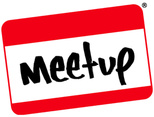 Eventbrite, so pay close attention to event registration instructions!
Eventbrite, so pay close attention to event registration instructions!
Accelerators & Incubators
The myriad of accelerators, incubators and co-working spaces in the Silicon Valley are incessantly vying for their spot in the startup ecosystem spotlight. The rest of us are the beneficiaries of their competition and of the well-developed ecosystem, for we have a great selection of events to attend at those venues, whether educational, purely social, or demo-oriented.
Note that inclusion in the list does not constitute a recommendation on the merits of the venue for its primary function as an accelerator, incubator or a co-working space, on which I remain silent. But as far as events go, they are usually open to the public!
Getting Around Silicon Valley

Transportation needs will vary between travelers. Generally speaking, getting around the Bay Area without a car is difficult, expensive and fairly unpleasant. Fortunately, renting a car is easy, and anyone used to driving in a major city should find driving in the Bay Area a breeze.
Despite this, depending on your meeting schedule, you may not need a car, especially if you plan on spending most of your time in San Francisco. If this sounds about right, scroll down to find out about your options for getting around the city (and about why you’ll see cars with pink mustaches all over town)!
Driving
If you are planning on driving, you can rent a car for the entire duration of your stay or, if you anticipate that parking will be nonexistent or expensive where you will be staying, and you only plan to make infrequent trips by car, by the day.
As long as you have a smart phone and will purchase a SIM card with a local 3G/4G connection, you can save yourself a little cash and go without a GPS (which the car rental places usually offer as an add-on). Using your Google Maps app you will get better driving directions around the San Francisco Bay Area than those offered by many specialized GPS devices.
 To find a car for the full trip, you might do a price comparison between different car rental places on Expedia or Kayak, or another similar service.
To find a car for the full trip, you might do a price comparison between different car rental places on Expedia or Kayak, or another similar service.
 Note that the San Francisco Airport, where you will likely fly into, has the following car rental counters on-site: Alamo, Avis, Budget, Dollar, Enterprise, Fox, Hertz, National and Thrifty. You can check their websites directly and look for promotions.
Note that the San Francisco Airport, where you will likely fly into, has the following car rental counters on-site: Alamo, Avis, Budget, Dollar, Enterprise, Fox, Hertz, National and Thrifty. You can check their websites directly and look for promotions.
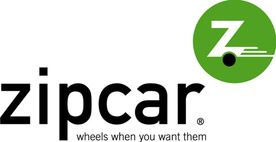 For shorter car trips you may consider Zipcar, a popular car-sharing service. Once you have a Zipcar account, reserve a vehicle online for as many hours as you think you’ll need. Then pick up the car from the Zipcar lot closest to you (there are many all over the Bay Area). The cost of fuel is included! And if you are running late, you can extend the time of your rental. Zipcar offers a wide range of options, whether you want to travel in style in a fancy BMW or Lexus, need an SUV for extra cargo space, or just need a regular compact sedan.
For shorter car trips you may consider Zipcar, a popular car-sharing service. Once you have a Zipcar account, reserve a vehicle online for as many hours as you think you’ll need. Then pick up the car from the Zipcar lot closest to you (there are many all over the Bay Area). The cost of fuel is included! And if you are running late, you can extend the time of your rental. Zipcar offers a wide range of options, whether you want to travel in style in a fancy BMW or Lexus, need an SUV for extra cargo space, or just need a regular compact sedan.
Taxis
Expect that getting around in a cab around San Francisco, and especially if you venture out of the City into the greater Bay Area (given our distances) will be quite expensive. If you like your taxis and feel comfortable with the cost, Luxor, Yellow Cab, and De Soto are the better-known taxi companies, although there are some up-and-comers, like Green Cab. Check out their websites for phone numbers. Some of them have apps to simplify the reservations process. But the traditional taxi industry is evolving with exciting new companies making a name for themselves.

 UBER and Lyft are two well-regarded services that offer ride-sharing services in San Francisco (and UBER does in the Bay Area too). Using an app customers are matched up with drivers in the area. The app estimates and lets you know the fare ahead of time, so that there are no surprises.
UBER and Lyft are two well-regarded services that offer ride-sharing services in San Francisco (and UBER does in the Bay Area too). Using an app customers are matched up with drivers in the area. The app estimates and lets you know the fare ahead of time, so that there are no surprises.
Read their Yelp reviews for the raves and the rants, and see if ride-sharing is right for you.
BART

The Bay Area Rapid Transit System (BART for short) is the closest type of transportation in the Bay Area to a major city subway or metro system.
BART’s most notable accomplishment is that it connects commuters from the East Bay (Berkeley, Oakland, and even as far south as Fremont) to downtown San Francisco and travelers to San Francisco International Airport.
BART runs fairly regularly (though nowhere close to the Moscow underground) and usually on time, unless of course, there is a strike, like the one going on now. You can find BART schedule on BART’s website, and there are a number of mobile apps for iOS, Android, and Windows platforms, with real-time updates on train schedules.
A multi-use BART ticket can be purchased from a machine at a BART station. A one-way fare from Fremont to San Francisco is $5.65.
ED: In my experience first time in the Valley jumping on the BART at the Airport and being delivered in downtown was very easy
Caltrain

To navigate between San Francisco and the Peninsula or the South Bay using public transportation, you can take advantage of our above-ground railway system, Caltrain.
Caltrain runs in a linear fashion from San Francisco at its north end to as far south as Gilroy. However, expect to walk or take a cab from the Caltrain station to your final destination because public transportation on the Peninsula and in the South Bay is virtually nonexistent.
Unlike BART and the typical subway systems in major metropolitan areas, Caltrain trains run with gaps of 20 to 40 minutes and sometimes even further apart. If you plan to use it, check the schedule ahead of time. You can find the train schedule on Caltrain’s website, and there are a number of Caltrain-approved mobile apps for iOS, Android, and even Windows platforms, that include up-to-date schedule information, which can also be found on the Caltrain website.
A Caltrain ticket needs to be purchased at the station from a ticket vending machine. The price is calculated based on the number of “zones” between the point of departure and the destination (typically between 1 and 3 for most travel within Silicon Valley) and ranges from $3.00 to $7.00 for a one-way ticket.
MUNI

If you really want to go native, within San Francisco City limits you can attempt to travel by MUNI, which consists of the bus system above ground and the light rail below. The cost is $2.00 per person for up to 90 minutes of travel, including transfers. The machine on the bus takes coins and bills, but it does not give change. Once you pay, you will get a fare receipt (a paper ticket), which will state the time when it expires. Make sure to keep your receipt if you plan on making transfers!
ED: For Train Spotters The light rail has a great old collection of trams from around US and the world MUNI with old restored Trams Paul Sullivan seems to have captured most of them here http://www.flickr.com/photos/pfsullivan_1056/
Where to Stay in Silicon Valley
The San Francisco Bay Area is simultaneously a very small and a very large place. Regardless of where you decide to stay (between SF and San Jose), you can, in a matter of one to two hours, depending on traffic, find your way to any meeting or event in the Silicon Valley. On the other hand, if you have a busy schedule, you’ll want to minimize the amount of time spent driving, or in public transit, and maximize the value of your time. For this reason, it helps to stay in or near the hubs of startup activity.
San Francisco

In San Francisco, the area called SOMA (south of Mission) boasts the greatest density of startups, startup co-working spaces, startup accelerators, startup incubators, and startup-oriented events.
If you are looking to be within walking distance of startup-oriented events each night of the week, SOMA is hard to beat.

Mountain View
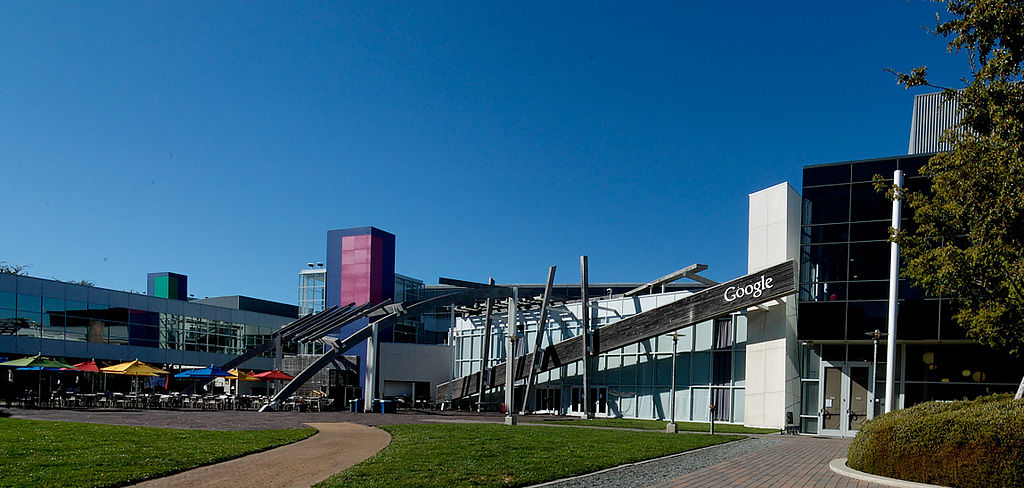
Mountain View is home to Google and Microsoft, and a slew of other tech companies. Naturally, there is a pretty well-developed startup scene in that area as well, with a number of startups events.
Hacker Dojo is a startup community center / co-working space in Mountain View, and Red Rock Coffee on Castro Street in Mountain View is the unofficial startup hangout, where any time of day you can find yourself sipping coffee next to a small group of founders working on their business plan or working out code kinks.
Redwood City
Our office is located in Redwood City, which is on the Peninsula about half-way between San Francisco and Santa Clara. Because of its prime location, Redwood City is starting to really pick up in terms of startup events.
There is a large incubator in Redwood City, called NestGSV, which holds many startup events. One of the larger startup networks, called 106Miles holds its monthly events in Redwood City (as well as in Palo Alto and San Francisco).
Palo Alto

Palo Alto is a lively university town (next to Stanford University ) that many startups and VCs are attracted to for its historic downtown feel with quaint coffee shops and a variety of cozy restaurants. Due to the two cities’ close geographic proximity and to a marked difference in ambiance between the two, the VC crowd, when outside the office, can more frequently be spotted in cafes on University Avenue than in downtown Menlo Park.

ED: Palo Alto is in my mind arguably the home of Silicon Valley with the birth of Hewlett-Packard just a few blocks from Stanford. For anyone who wants to see history and be inspired this Garage launched a multi-billion business thats over 50 years old and helped launch high tech industry in the Valley.

Menlo Park
The famous Sand Hill Road, where the majority of well-known venture capital firms are headquartered, is in Menlo Park. But aside from these renowned neighbors, Rosewood Hotel (featured above), and perhaps Café Borrone on El Camino, Menlo Park has little to boast by way of startup life.
Service Providers to Meet While You are Here
Startups that plan to have a U.S. presence will need to build a framework of trusted service providers to serve their legal, accounting, banking, and other needs.
While many of these matters can be handled from abroad, there is nothing like meeting in person with service providers with whom you plan to build a long-term relationship while you are already in the Bay Area.
Legal
Taking your business into the United States means that you will need experts to help you navigate local laws and local transactions.
Although legal services are not cheap, they are an important investment in your startup’s success. You will be relying on your attorneys heavily to guide your actions and provide advice and counseling, so pick attorneys whose expertise you trust and who understand that their role, especially with foreign startups, goes far beyond crunching out forms and pushing paper.
Corporate & Securities
At the very least, you will need attorneys who will document (a) your startup’s flip to the United States, which will be a prerequisite for getting investment from U.S. funds, and (b) the investment itself. These attorneys specialize in corporate and securities work, and you want to make sure they focus on startup work specifically.
Patents
In addition, you may be looking to file patents to protect your intellectual property in the United States, if you have not already done so. While some of the larger firms have both corporate and patent attorneys housed under one roof, many startups choose to work with specialized IP law firms on their patents and with specialized corporate practices on their formation, flip, and financing matters.
Immigration
Finally, it is very common for foreign entrepreneurs to want to meet with immigration counsel during their trip. A foreign management team relocating to the U.S. needs visas allowing them to work here. Frequently, immigration services are provided by small specialized practices and solo practitioners, though our firm has an immigration practice in addition to our corporate & securities and trademark practices.
Accounting
A corporation is a stand-alone legal entity and must file tax returns with the IRS on either an annual or a quarterly basis, depending on its revenues. It must make the filing even if it has no tax liability at the end of the year and even if its losses far exceeded its gains.
The United States tax code is complex, to say the least. A savvy tax accountant can not merely competently fill out the tax forms, but advise on ways to make the business less likely to be the subject to an IRS audit.
Note that in the United States, unlike many other countries, legal and tax services may not be provided by professionals within the same firm, which is why well known international accounting firms like Deloitte or KPMG do not offer legal services in the United States and focus solely on their core area of expertise – accounting.
But a startup does not need its tax accounting done by a Big Four accounting firm. There are many smaller local accounting firms that offer services at a more reasonable price point and more than amply satisfy the requirements of startup accounting.
Note that the word “CPA” after the name of a professional signifies that the individual is actually licensed to practice accounting. While it is not illegal to perform accounting work without having the CPA license, it is important to be aware of the distinction.
Our firm has established relationships with several accounting firms, which we routinely recommend to our clients. A corporation is a stand-alone legal entity and must file tax returns with the IRS on either an annual or a quarterly basis, depending on its revenues. It must make the filing even if it has no tax liability at the end of the year and even if its losses far exceeded its gains.
The United States tax code is complex, to say the least. A savvy tax accountant can not merely competently fill out the tax forms, but advise on ways to make the business less likely to be the subject to an IRS audit.
Note that in the United States, unlike many other countries, legal and tax services may not be provided by professionals within the same firm, which is why well known international accounting firms like Deloitte or KPMG do not offer legal services in the United States and focus solely on their core area of expertise – accounting.
But a startup does not need its tax accounting done by a Big Four accounting firm. There are many smaller local accounting firms that offer services at a more reasonable price point and more than amply satisfy the requirements of startup accounting.
Note that the word “CPA” after the name of a professional signifies that the individual is actually licensed to practice accounting. While it is not illegal to perform accounting work without having the CPA license, it is important to be aware of the distinction. Our firm has established relationships with several accounting firms, which we routinely recommend to our clients.
Banking
A U.S. bank account is one of the perks and requirements of a U.S. corporation. Often, collecting credit card payments through a U.S. business checking account is easier than doing so through a foreign bank.
Since 9/11 and the passing of the Patriot Act, it has become virtually impossible to open a bank account without physical presence in a U.S. bank branch.
With that in mind, even if you have not yet formed a corporation in the United States, you should consider visiting a bank, preemptively. Talk to a bank representative, show your ID/passport, whatever they require, so that when you do form a corporation, you can send your certificate of incorporation and EIN and will need not make a separate trip to the United States to open the account. It is a good way to save yourself some time in the future.
Our firm has established a good relationship with Citi Bank and Comerica Bank.
Local Advisors
Advisors may not be the first thing that comes to mind when thinking about service providers in the startup ecosystem. But they provide an invaluable service to startups and should not be overlooked. The right advisors can make a big difference!
A foreign startup especially might benefit from the expertise of a Silicon Valley advisor if the goal is ultimately to expand the business into Silicon Valley and establish a presence here.
An advisor serves three primary functions: provides advice to founders on high-level strategic matters, makes introductions to contacts in his network, and his name carries prestige.
While you are here, take the opportunity to meet with the individuals you are considering as advisors, to make sure there is a personality fit and that their network is a match for your company’s needs, such that their intros would actually be valuable. Someone who is well-regarded as an industry expert does not automatically make a good advisor to your company.
Office Space & More
If your startup is going to have a footprint in the Silicon Valley, you should think about office space for your team, once they relocate.
Visiting a few local accelerators, incubators and co-working spaces will help you decide whether that is the way to go for your startup. Especially if your team in the U.S. will initially be small, there may be advantages to being in an environment with other startup teams, sharing resources and providing sounding board support to one another.
White has co-working space available to our clients for free during their U.S. trip (up to 2 weeks) and for rent for longer periods.
As always we want your comments and experience.
To book your free 1/2 hour session with Inna please fill out the following form
[contact-form][contact-field label=’Name’ type=’name’ required=’1’/][contact-field label=’Email’ type=’email’ required=’1’/][contact-field label=’Website’ type=’url’/][contact-field label=’Objectives’ type=’textarea’ required=’1’/][contact-field label=’When are you visiting Silicon Valley’ type=’text’/][/contact-form]
Related articles
Pitch your Startup, App or Hardware or post a Startup Event or Startup Job













